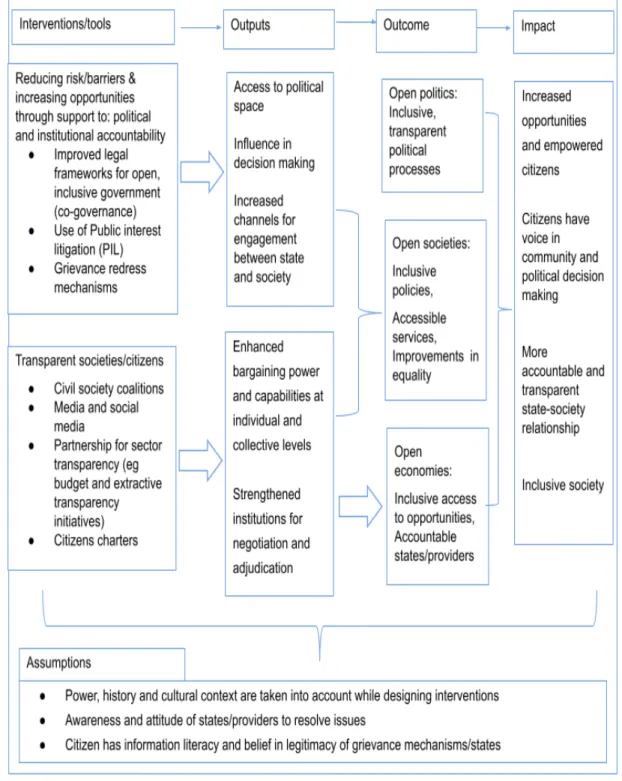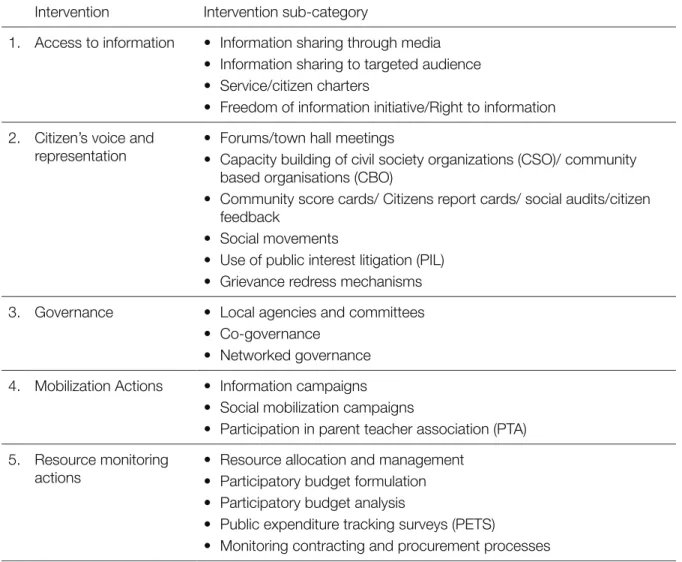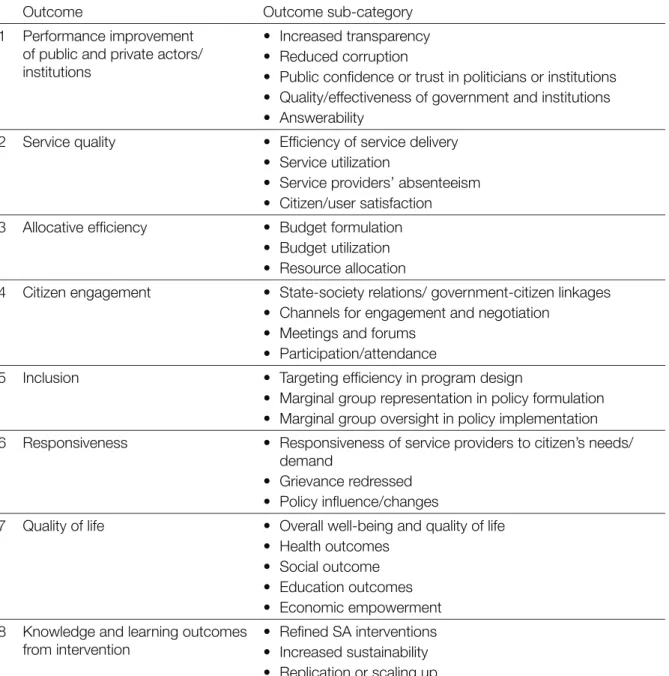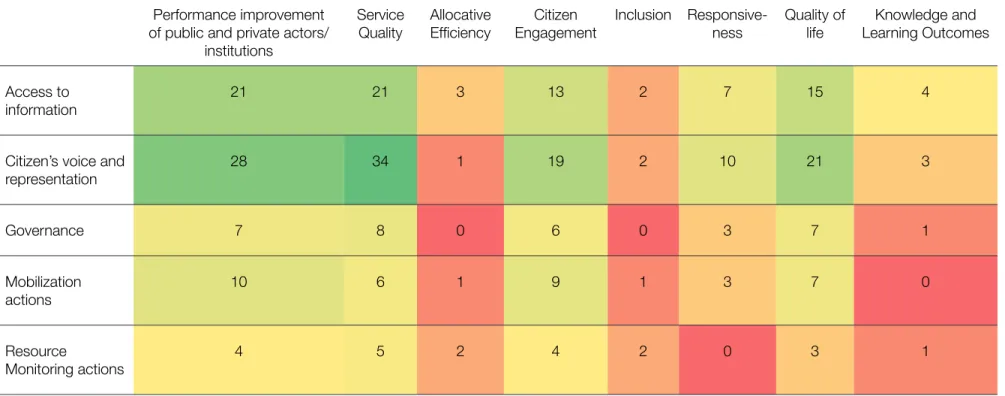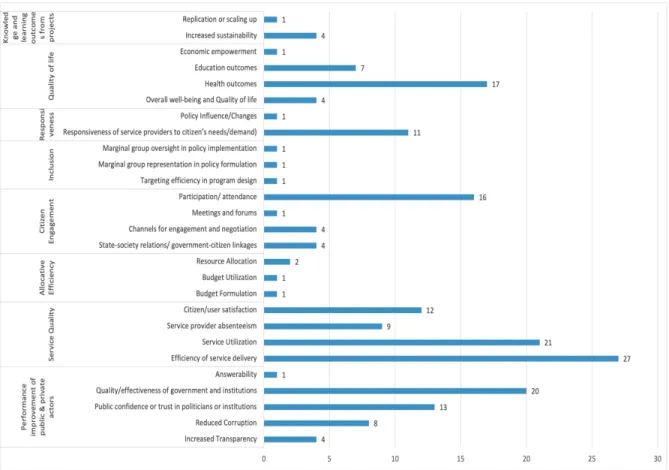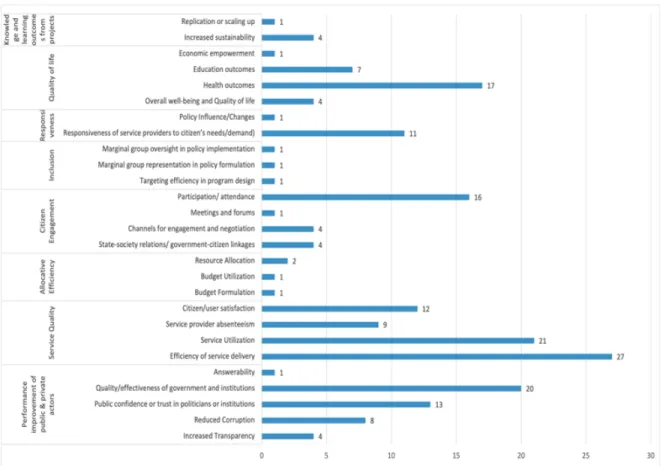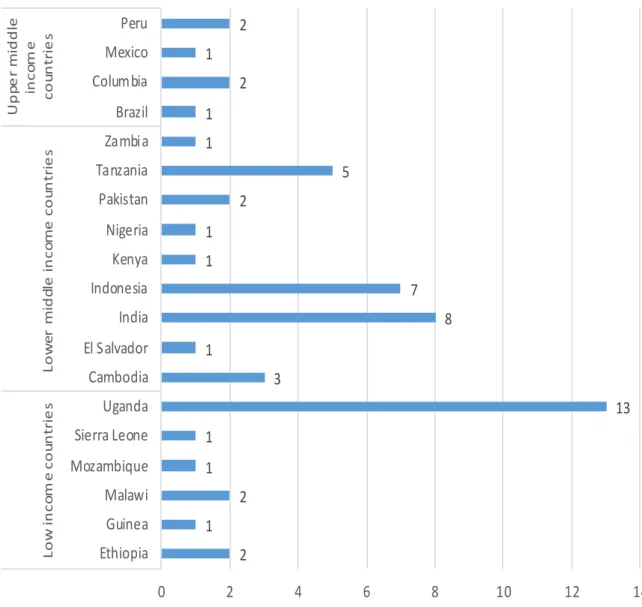This evidence gap map study provides findings from existing empirical research on the effectiveness of CSR in low- and middle-income countries. They further explain that it is difficult to predict its success without examining the evidence on the various dimensions of SA interactions, the underlying context, and the difficulties in capturing effects for some of the most complex CSR outcomes. The Evidence and Gap Map (EGM) on the effectiveness of CSR interventions in low- and middle-income countries will inform users of the extent and quality of the evidence base for these interventions.
More broadly, the EGM aims to identify, map and describe existing empirical evidence on the effectiveness of social accountability interventions in low- and middle-income countries. What is the size and quality of the evidence base of social accountability interventions in low- and middle-income countries. The background section introduces the paper by briefly describing social accountability and mapping the evidence gap.
We aimed to present impact evaluations and systematic reviews of CSR interventions relevant to our conceptual framework (Figure 1). However, in order to make the evidence map concise, the study could not cover all CSR interventions.
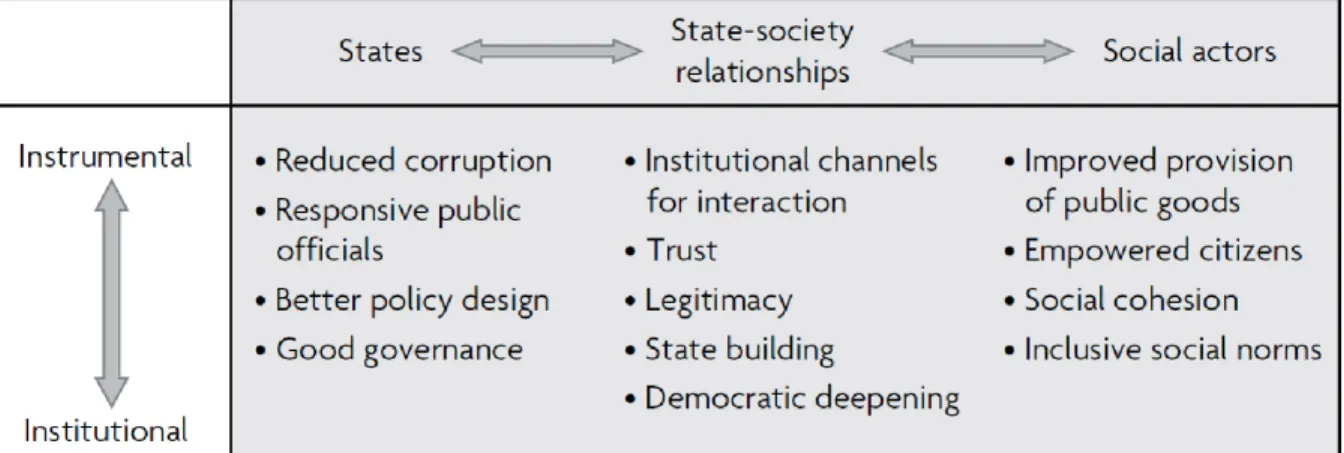
Selection of interventions
Selection of outcome
Methods
Selection criterion
Methods of search, screening, and data
The title and abstract of each study were checked twice by four reviewers, divided into two groups. For the full text display, the recordings included from the title and the abstract display were equally divided between the two groups. For data extraction, a single coder coded all filters, and data coding was verified by experts at the Campbell Collaboration.
Three reviewers were assigned to data extraction, one of whom was required to review the records of both groups. Finally, a fourth reviewer reviewed all records extracted by the three reviewers for final review.
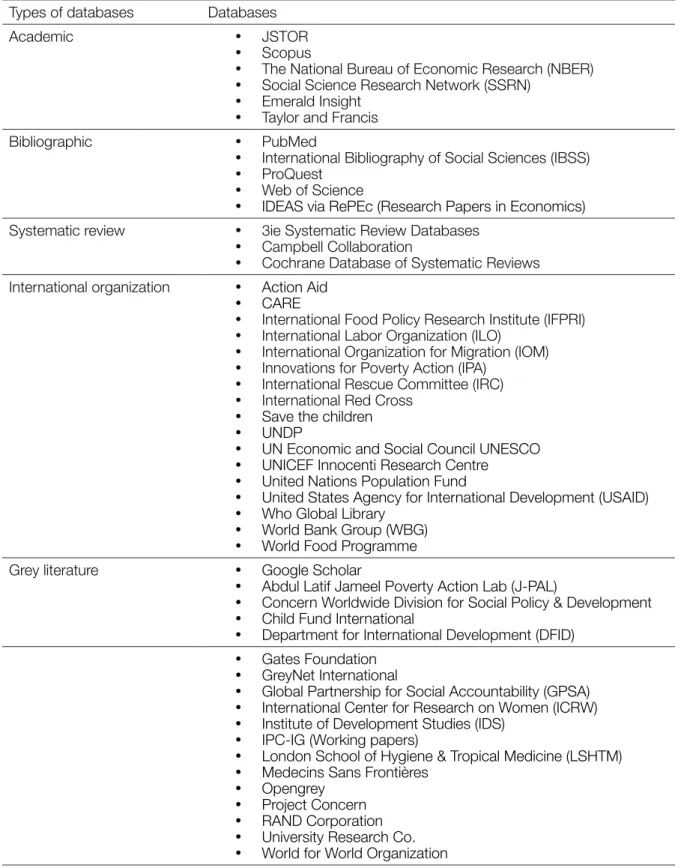
Presenting the map
Results
Studies identified, search results, and the volume of the evidence base
Characteristics of the evidence base
- Studies by intervention and outcome types
- Studies by intervention and outcome coverage
- Geographical coverage by intervention
- Characteristic of evidence by study design
- Studies by population
- Trend in the number of publications The number of publications of intervention studies
- Frequency of Systematic reviews by quality
Thirty studies among the included studies involved community scorecard/social audit/citizen report card type interventions. Fewer studies were included in the intervention categories such as resource mobilization actions and governance. There are studies of these interventions that are mostly theoretical or based on qualitative designs; However, very few studies could be found that conducted impact evaluations on these intervention categories.
As some studies have multiple interventions, the total distribution for this number is greater than 53. The distribution of results shows that most studies were able to achieve results of improving the quality of services and the efficiency of the categories of public and private actors. The majority of studies (n = 28) focused on lower-middle-income countries, with the largest number of studies in Uganda.
As mentioned earlier, most of the included studies were about community scorecards/citizen report cards/social audits; 19 of them were from low-income countries, followed by 16 from lower-middle-income countries. The case is similar for the sharing of information by the target audience as well: nine countries were from low-income countries and 11 were from lower-middle income countries. Among the 53 studies included, 30 were randomized control trials while six were non-experimental and eight before and after design.
Fifty-one percent were either systematic reviews or did not clearly report their location (Figure 4.9). The number of studies on older people, people with disabilities, mental illness or indigenous people is very low. Trends in the number of publications The number of publications of intervention studies The number of publications of intervention studies has mainly been increasing since 2004.
On the other hand, before 2013 no systematic reviews were identified on social responsibility intervention (Figure 4.12). 67% of reviews are of moderate quality, meaning 67% of reviews have more than one weakness but few critical errors. 6 AMSTAR 2 is a critical appraisal tool for systematic reviews of health interventions that incorporate either randomized or non-randomized research, or both.
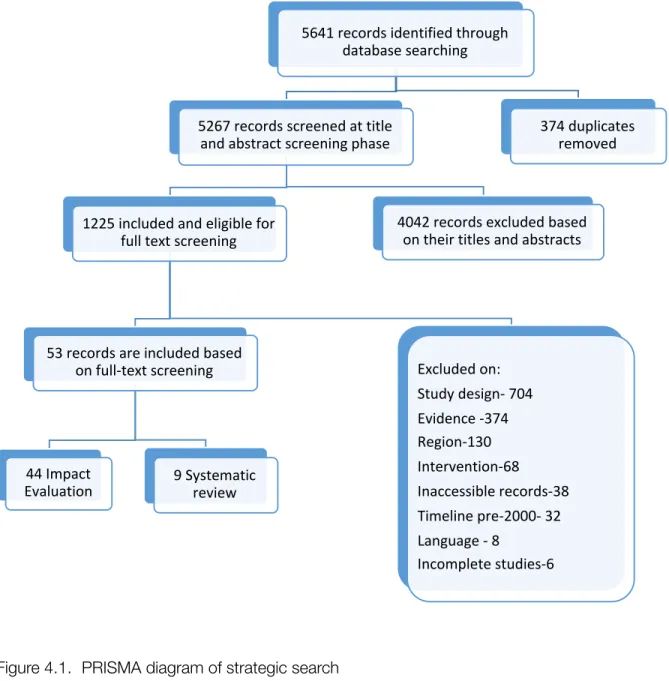
Gaps in evidence and synthesis according to main findings
Author’s Conclusion
Implications for research and scholarship
Implications for practice and policy
A realist synthesis of the impact of social responsibility interventions on the responsiveness of healthcare providers and policy makers. A social audit typically records and interprets the experience of the customers or citizens the organizational entity is intended to serve. Using the mechanism of legal action for enforcing the interests of the public in the court.
When social protests, movements or consultations are insufficient, the best way to harness society's energy is through "co-governance", which involves inviting social actors to participate in core state activities. Campaigns Campaigns that aim to improve the awareness of the general public about the accountability of public services and public officials. Public spending begins with the allocation of public resources to different sectors, reflecting the needs of the poor and marginalized, including the management of natural resources.
This may include analyzing the impact and implications of budget allocations, demystifying the technical content of the budget, raising awareness of budget-related issues, and undertaking public education campaigns to improve budget literacy. A quantitative study of the supply side of public services that traces the flow of public funds and material from the central government level to frontline service providers. The basic objectives of the formulation process are to provide basic information for use in making decisions about allocating resources toward meeting goals and needs; and to ensure that each responsible party in the process has a satisfactory opportunity to analyze the information necessary to make decisions.
Collaboration between social responsibility initiatives of civil society actors and state accountability institutions (horizontal accountability). By using lessons learned from past or current initiatives to increase the likelihood of sustainability of current or future SA initiatives, e.g. by strengthening local networks. Mental illness studies where the main population group studied are people with (or a history of) mental illness.
Gray literature, including technical reports that report quantitative data related to the effectiveness of social responsibility interventions. Main search string: "social responsibility" AND ("transparency") OR ("corruption") OR ("accessibility") OR ("connections between citizens") OR ("trust") OR ("service quality") OR ("efficiency") OR ("service utilization") OR ("citizen satisfaction") OR ("user satisfaction") OR ("quality of public services") OR ("trust in public services") OR ("empowerment") OR ("election result") OR ( “democratic spaces”) OR (“political influence”) OR (“efficiency”) OR (“budget utilization”) OR (“resource allocation”) OR (“inclusiveness”) OR (“targeted performance”) ”) OR (“inclusive policy ”) OR (“marginal group representation”) OR (“responsiveness”) OR (“user responsiveness services”) OR (“officials’ attitude”) OR (“health welfare”) OR (“poverty reduction”)) AND ((“citizens” ) OR (“youth”) OR (“youth”) OR (“rural citizens”) OR (“urban citizens”) OR (“humanitarian”) OR (“tribals”) ) OR (“marginalized population groups”) OR (“ women") OR ("adult") OR ("elderly")).
